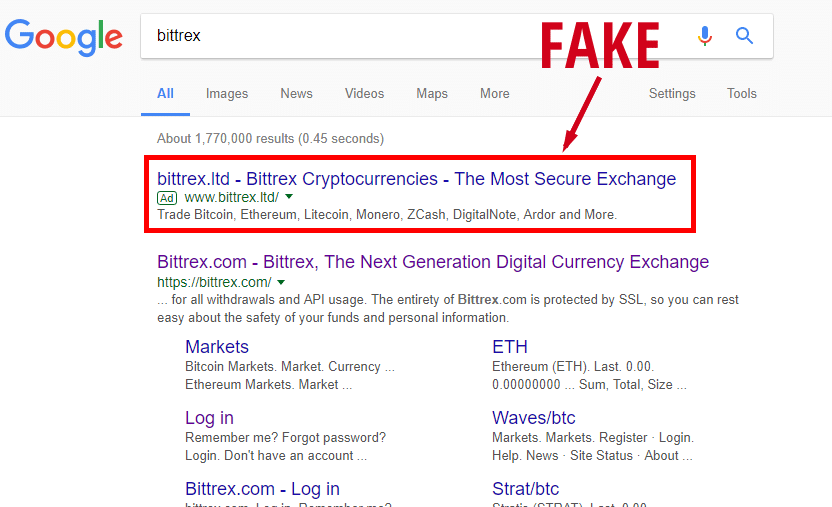Welcome to the Wild World of Cryptocurrency Scams
Cryptocurrency has long been able to escape the grip of regulators, and even with numerous entities threatening to crack down, the decentralized ecosystem will always find a way to stay just out of reach. Although many tout this as a positive attribute, it tends to open up the market to scammers willing to take advantage of the uninformed and unaware. Due to its unregulated nature, the cryptocurrency industry contains numerous bad actors who are able to dupe others with little to no repercussions. Because of this, it’s important to be cautious when operating in the blockchain space. We’re here to help you understand some of the most common cryptocurrency scams and make sure you don’t get bamboozled yourself.
Twitter Frauds
Lately, the most common (and frankly, laziest) attempt to swindle investors has infiltrated Twitter. Bots and fake accounts posing as well-known icons have begun bombarding tweets with promises of bringing 10x returns. Here’s how it works:
- Famous person (@elonmusk) posts a tweet.
- Fake account with same profile picture (@elonmmusk) comments on the tweet. In the comment, the faker references the original tweet and announces a giveaway. For the giveaway, you just need to send .3-2 Ether to the stated address, and you’ll receive 3-20 Ether back.
- Bots like, share, and comment that the giveaway worked for them.
- Spoiler alert: If you send Ether, you won’t receive any back.
Although this may seem like an obvious scam, people have fallen for it time and time again. It’s never wise to send any amount of money to someone who promises any type of return. If it’s too good to be true, it usually is.
*cough* Bitconnect *cough*
Market Manipulation
Some regulation can be a good thing, especially when it protects the average joe. Typical trading regulations prevent whales with large bankrolls from controlling the market and tricking normal investors to open/close positions that they normally wouldn’t. Without these regulations in place, there are a few common market manipulations that you want to be on the lookout for.
Fake Buy/Sell Walls
Unless you consistently base your trades on chart analysis, buy/sell walls may not affect you. You can recognize a wall when looking at the depth chart of an order book. Just as the name implies, a wall appears as a high wall on one side of the order book oftentimes 2-5x larger than the other side.

When seeing a sell wall, your first thought may be to panic sell because it looks as if that’s what the rest of the market is doing. On the contrary, though, that usually isn’t the case. Sell walls, like the one pictured above, are usually put up by just one, or a few, individuals. They put up these walls in order to suppress the price and dupe investors into selling. Then, they buy up those coins at the lower price.
If the buy orders begin chipping away at the sell wall, they simply drop the wall. The opposite holds true for artificial buy walls. Understand that these fake walls can disappear at any time.
Pump and Dumps
In an industry where 50% gains in a month are entirely possible, it’s amazing that pump and dump (P&D) groups even exist. Pump and dump groups are coordinated efforts to artificially pump the price of a coin before dumping it on the fooled investors who thought they were catching a rocketship to the moon.
A pump and dump actually cons two separate parties and usually goes something like this:
- You join a pump and dump group. Some are free to join, but you usually need to pay to be part of one.
- The group leader chooses a coin to pump and a price to dump it at.
- Everyone in the group rushes to buy up the coin at a low price.
- The coin price starts pumping and investors outside of the group, afraid of missing out, buy the coin further pushing up the price.
- The group sells, and the outside investors are stuck holding the coins.
- The group members profit.
But, not exactly. Most, if not all, pump and dump groups con the members of the group as well. Insiders and group leaders usually buy the coin before the pump and sell before the announced dump price. Most pump and dumps never reach the stated sell price leaving out-of-the-loop members holding bags as well.
You should avoid pump and dump groups at all costs. On one side, you’re participating in something that’s unethical and soon to be illegal. On the other side, you’re being gotten by a group of immoral insiders.
As an outside investor, be wary of coins that suddenly surge in price. One quick way to determine if the coin is part of a pump and dump scheme is to look at its trading volume. If it’s significantly lower than other coins, there’s a good chance that you’re being swindled.
In the below chart, U.CASH showed a brief 400% pump but only had a trading volume of a little over $25,000. This is a great example of how even a small group or one person can quickly pump and dump a low market cap coin.

Paid Promotion
Although it may seem like every celebrity has your best interest at heart, many prominent figures in the crypto space are paid to promote coins. Ethically, these endorsers should disclose whenever they’re paid to promote a project. However, there’s currently no law forcing them to do so and they rarely do.
Even forums like Reddit and Facebook can become breeding grounds for people who get paid to promote certain coins.
Take every recommendation with a grain of salt, and as the kids say, DYOR (Do Your Own Research).
Shoddy Exchanges
Keeping your digital assets on exchanges is incredibly risky. They’re susceptible to hacks, some have questionable management practices, and many have security flaws that have been exposed by the recent influx of new investors. For those reasons, we recommend that you keep your coins in a wallet, preferably a hardware wallet like the Trezor or Ledger Nano S.
Even when storing your funds in a wallet, you should be careful when trading on exchanges.
Phishing Attacks
Phishing attacks are one of the most common cryptocurrency scams. Phishers commonly purchase domains and Google ads imitating popular exchanges. Even the ‘fake’ website looks almost identical to the real thing. Once you enter your credentials, the fake site redirects you to the correct platform, and the thieves empty your account.
To prevent this, make sure you always type the exchange URL directly into the address bar. More importantly, you should have some type of 2-factor authentication enabled for all of your accounts as well.

Don’t Get Fooled Again (No No!)
Be safe out there. The cryptocurrency industry is ripe with nefarious players who have no reservations about taking your money in the blink of an eye. Although there’s no possible way to avoid all cryptocurrency scams, following the above tips and staying vigilant will do a lot of good. Don’t end up as the dummy who lost it all in an attempt for some easy gains just because Elon Mmusk guaranteed it.
The post Twitter Frauds, Market Manipulation, and Shoddy Exchanges: Common Cryptocurrency Scams to Watch Out For appeared first on CoinCentral.

Coincentral.com is author of this content, TheBitcoinNews.com is is not responsible for the content of external sites.
Our Social Networks: Facebook Instagram Pinterest Reddit Telegram Twitter Youtube











